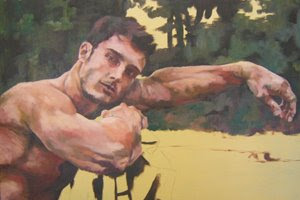My first painting in two years!
I was in Zürich for Christmas last year. The Wildbach is a stream near the Zürichhorn area. It means 'wild stream' in German.
Wildbach in December
50x70 cm, oil on stretched canvas
A landscape with snow provides wonderful contrasts for a painting. The cool shadows vs. warm sunlight, light snow vs. dark trees. It could be monochromatic and focus on values and shapes. Or it could be a study on the various hues (shades of colours) which exist in the scene. The colourless snow is never truly 'white'. It reflects the subtle colours near it, which are further affected by the sunlight (or lack of it).


















